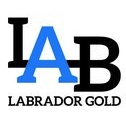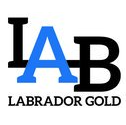SPONSOR: Labrador Gold – Two successful gold explorers lead the way in the Labrador gold rush targeting the under-explored gold potential of the province. Exploration has already outlined district scale gold on two projects, including over a 40km strike length of the Florence Lake greenstone belt, one of two greenstone belts covered by the Hopedale Project. Click Here for More Info


Investors are starting to pay more attention to junior miners but the sector isn’t out of the woods when it comes to attracting much needed capital, according to one mining executive.
Gold’s $200 rally this year has breathed new life in the precious metals market, but the junior sector has seen only a small portion of renewed investor interest. The TSX Venture Index ($JX), which is heavily weighted with junior explorers is up less than 3% this year, a disappointing performance compared to gold’s 18% rally so far this year.
Following a busy and positive Beaver Creek Precious Metals Summit, Ioannis Tsitos, president of Goldsource Mines (TSX.V: GXS) said that the junior exploration sector needs more than just higher gold prices to attract investors; it needs new discoveries: greenfield discoveries
“In the last decade we have seen a significant decline in budgets for greenfield exploration and that has led to less discoveries and that has led to less stories in the marketplace,†he said.
Greenfield exploration refers to projects in unchartered territory where information on the region’s mineralization is unknown. Because of that lack of initial mineral information greenfield projects are seen as a higher risk compared to brownfield projects, where exploration is done around an existing mime.
Tsitos added that not only are few deposits being discovered but grades are also dropping, which leads to a general lack of excitement in the industry.
“Investor sentiment is improving for the sector but junior explorers
still need to do a lot more work and show that they are finding new
deposits,†he said.
Tsitos’ comments come as the company
develops its Salbora project, in Guyana, South America, which isn’t
exactly a greenfield project as there has been some preliminary airborne
surveys of the area. The project is also 1.5 kilometers from the
company’s Eagle Mountain Gold Project. However, the company has been
doing a lot of work to define the project’s mineralization.
Earlier this spring the company was able to raise nearly $7.5 million in an oversubscribed private placement deal. Tsitos added that the company has spent about $2 million on an aggressive exploration, targeting 4,000 to 5,000 meters drilled by the end of the third quarter.
“The private placement was oversubscribed in one day,†he said. “It just shows how starved investors are for a new discovery.â€
Tsitos added that his company didn’t set out to be a greenfield explorer but have embraced this role as the company ran into production issues when it started producing gold at Eagle Mountain. He added that the company needed to expand its resource to make the original mine more efficient.
“For us exploring in a greenfield was a necessity. We were driven by internal forces and our organic growth objectives,†he said. “But being on this side we see the need for new discoveries in the industry.â€
Source: https://www.kitco.com/news/2019-09-17/Higher-gold-prices-aren-t-enough-new-discoveries-are-needed-mining-CEO.html

























